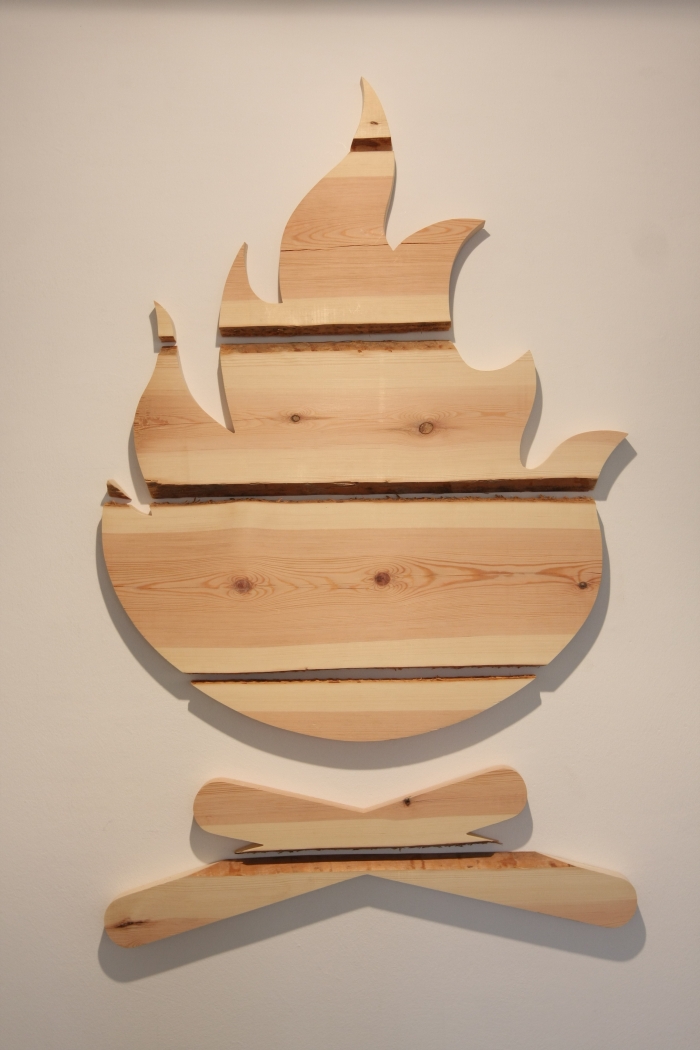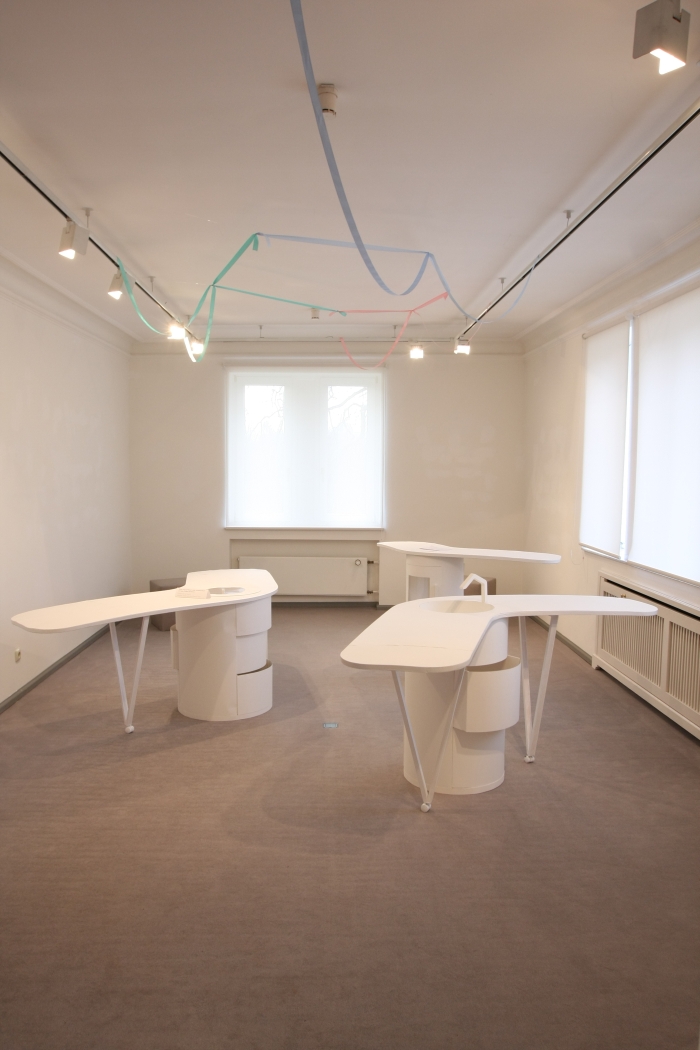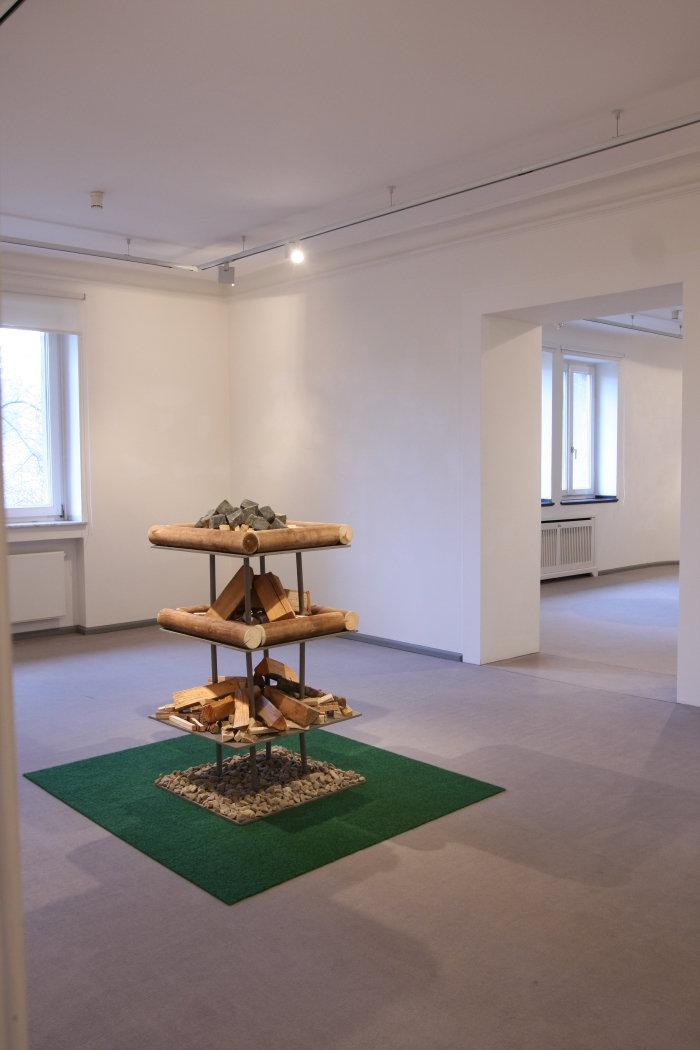While the old adage "you are what you eat" can't be true, if it were we'd be a slovenly pile of beer and crisps, it is very true that you are how you cook.
Cooking has largely developed with cultures, the way similar foodstuffs are prepared and cooked, for example, varying from region to region, and regardless of how technologically advanced society inevitably becomes, cooking will, we suspect, remain largely resistant to change. Cooking systems will evolve and adapt, but cooking processes will remain essentially the same.
The oldest cooking method is the open fire, a cooking system that is in many ways an intrinsic part of the human psyche, and a method that in its simplicity cannot be bettered. A method however which is not that compatible with the modern home.
In context of a semester project organised by Professor Wolfgang Laubersheimer students at the Cologne International School of Design, KISD, were asked to update the open fire and the results are currently being displayed in an exhibition at the Villa Zanders art museum in Bergisch Gladbach.

Presenting 11 projects from 21 students Die Metamorphose des Lagerfeuers - The Transformation of the Bonfire - contains a delightful variety of responses to the set brief, ranging from the practical to the theoretical and on to the empirical.
As ever, we know it is a student project exhibition not a beauty pageant; however, one or the other project did stand out for us.
Transacess Kitchen by Kentaro Morita features three wing shaped units each standing on a fixed foot. Each unit can be turned through 360 degrees thus allowing the creation of a complete circle, three individual tables, or any combination in-between. In addition each of the three supporting feet has a function: a sink, a cooker and a cooler. What is particularly interesting about the project is that it dissociates the kitchen from the room and thus makes the kitchen the focal point. Kitchens are generally fixed and defined by the shape of the room in which they are placed, as a consequence the shape of the room defines via the shape of the kitchen the way the room is used. Transacess Kitchen ignores the space and thus frees the user from such restrictions. Which is genuinely delightful.
Origami kitchen by Lara Liese, Larissa Richter, Franziska Severin and Jacqueline Staiger is and was a very similar concept in that being a foldable kitchen the user defines how it fills the available space; however, we did find ourselves asking, if there is space for everything why do you need to pack it away? Yes, we understand that you can fold the kitchen away when it is not in use, but that's not how one uses kitchens. Kitchens are always in use. And so you're invariably always going to want it folded out. Where such a principle however could be valuable is in mobile kitchens, say for example as part of a rapid response housing plan for emergency areas. One could have several such units permanently folded on pallets which could be shipped to the affected areas and then unfolded inside makeshift accommodation. Clearly one would have to consider what facilities they offered - running water and electricity are unlikely to be available - but as an aid to the organisation of emergency accommodation potentially very helpful.

As a kitchen in which every cooking related action requires undertaking a sport act - punching a punch-ball, for example, turns on the hob, while the herbs and spices are attached to elastic ropes which need to be pulled, chest expander style, to access the contents - Fit Cuisine from Jana Dreyer and Pia-Marie Stute may have been conceived as an ironic comment on modern lifestyles and our less than balanced relationship between sport/healthy eating and diets/sitting in front of a computer, however we can see a real value in it. For although fully impractical and unnecessary in the majority of situations, in an old folks home or rehabilitation institute where patients are nursed back to health following serious illness, such a concept which combines cooking with regular light exercise is something well worth considering.
While we generally greatly approved of the table system Mosis by Maria Del Pilar De Arino Bello, placing things in drawers that you pull out to use never, ever works. Ever. What really impressed us about the project however was the way the legs are utilised to guide the utilities in and out. Yes it does mean that the table cannot be moved, but in many instances you don't want the table to be moved. And in such cases Maria's solution makes perfect sense.

In these pages we've often bemoaned that while we have seen numerous indoor gardening systems that are self-maintaining, and while we've seen many that are technically very refined, we've never seen one that appeals visually, or which makes sense from a practical perspective. Vertical garden by Juliane Ahn, Paul Guddat, Hassan Kaya, and Christoph Laszig is perhaps the best we've seen. Visually a very complete structure which although it doesn't taper pyramid-like skywards really should, the system features a closed internal watering system and an inbuilt, positionable, light source. Yes you could place it in front of your south facing kitchen veranda window.......but as the majority of us don't have such and will have to make do with the, generally, awful lighting conditions in our kitchens, a variable and mobile light source is very sensible.
Elsewhere The Block by Jan Lukas Mevis and Paul Peeters is a nice idea, aesthetically not the sort of object your ever going to impress us with but the idea and many of the features contained therein are very well thought through and show a keen eye for the logical; Native Cooking (Samoan Umu) by Annabel Setefano is very nice fire stand based on the traditional Samoan fire that never goes out; Gunfire by Patrick Bieschinski offers a modern take on the bonfire and/or the fire in an oil drum, and is possibly something for all those in our modern urbane world who have ready access to gas but not to firewood; Daniel Slowes & Lizbeth Arce Pasqualli explored the olfactory aspects of cooking with the projects Smellmory, Angelia Igorevna Knyazeva tackled the auditory with The Audible Kitchen, and Carsten in der Elst carried out some very elementary design research: how do you prepare the perfect poached egg.

As a student semester project the principle focus of Die Metamorphose des Lagerfeuers wasn't the development of real kitchens, but much more the approach to the brief and the way the students developed their project. We can't comment on how satisfactorily or otherwise they achieved that, but we were genuinely delighted to find that one or the other project did result in a very viable solution.
However what Die Metamorphose des Lagerfeuers principally achieves is focussing attention on how little one actually requires in order to be able to cook, and thus how simple kitchens can be. A realisation which automatically poses the question, why in the design of our kitchens do so many of us opt for the standard fair offered by the kitchen industry? The simplicity of the cooking process allows us unlimited freedom in how we design and use the kitchen, we don't need that much, just what we need in the right place and in a form that is as logical as it is uncomplicated. The kitchen is thus a location where one can be very creative.
In many ways viewing Die Metamorphose des Lagerfeuers makes you angry that you don't make better use of that freedom.
Die Metamorphose des Lagerfeuers is an accompanying exhibition to Topf und Deckel Villa Zanders' exploration of artistic interpretations of cooking and which features works by, for example, Käthe Kollwitz, Alexander Coosemans, Frank Burkhardt and Tobias Hantmann
Both Die Metamorphose des Lagerfeuers and Topf und Deckel can be viewed at Villa Zanders, Konrad-Adenauer-Platz 8, 51465 Bergisch Gladbach until Sunday March 8th